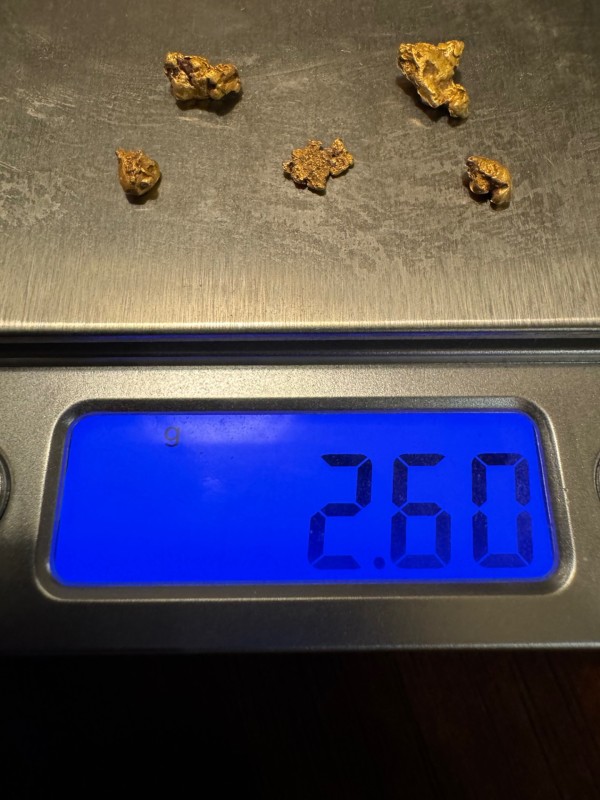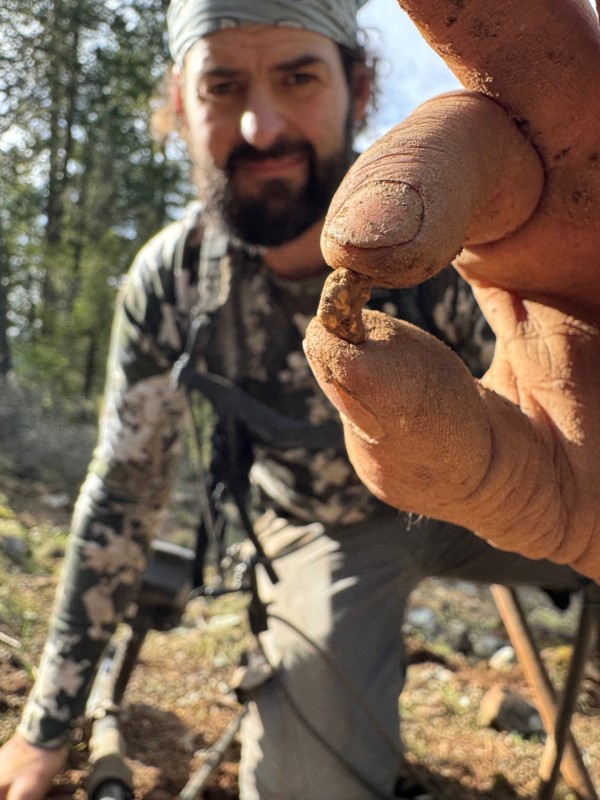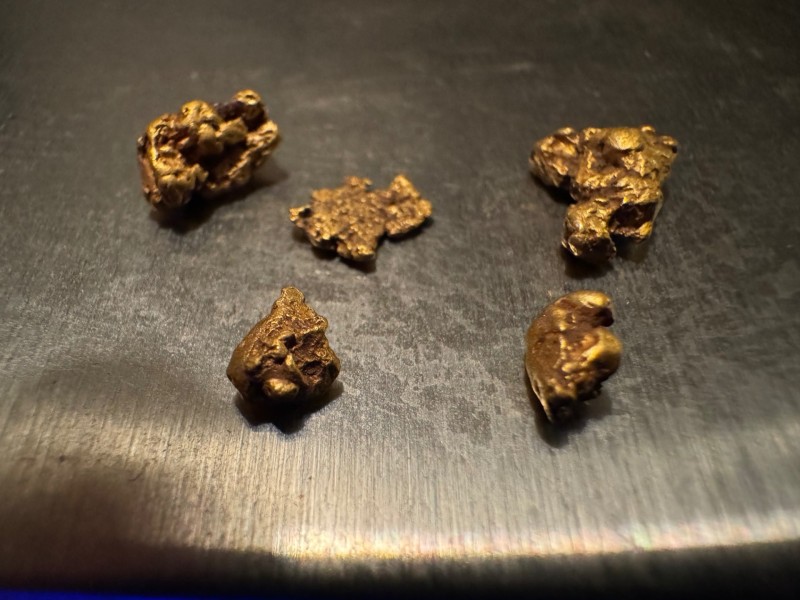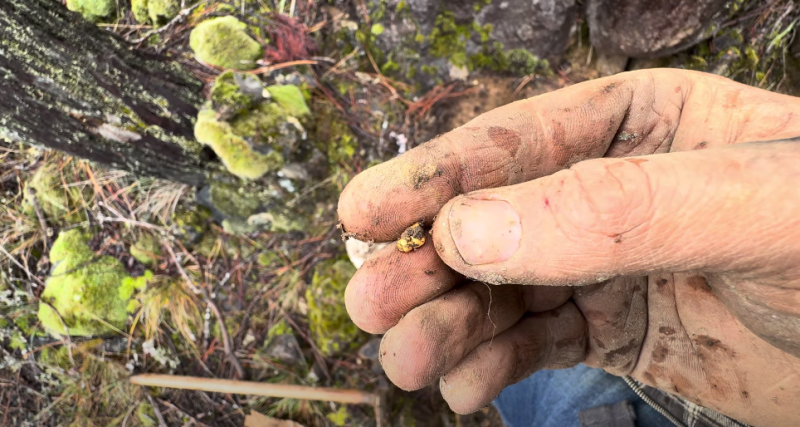-
Posts
599 -
Joined
-
Last visited
Content Type
Forums
Detector Prospector Home
Detector Database
Downloads
Posts posted by tboykin
-
-
Thank you for sharing this treatise Steve. The diagrams are really interesting. Seeing how the old timers set up sluices with what they had on hand is very cool!
-
9 hours ago, Geotech said:
At White's I designed an MXT+SMPI circuit, got the TX, coil, and preamp working but then abandoned the project for the far more promising truncated half sine. With MXT+SMPI you get one or the other but not both at the same time. With half sine you get both at the same time, and the option to do multifrequency/multipulse. I got the half sine project running and that's when I left White's. No one ever continued the project.
We tried to continue it for about a year after I took over engineering, but the documentation was a couple of notebooks, shoeboxes of parts, and not much else. We dug through boxes and boxes of what I assume was your stuff trying to figure everything out.
The employee turnover at White’s was really bad, and the inmates were running the prison for too many years. It could have been a great product with the right combination of resources, guidance, and time. It was the one project I was really excited about, but the poor project management, lack of documentation, and overall disarray of engineering (and management) made it challenging to even figure out which PCB’s were supposed to talk to each other.
Good lesson for future engineers and project managers- document everything so that the next guy can continue the work.
-
 6
6
-
 1
1
-
-
My buddy Josh and I have been on a good run, but last trip I had a skunk day. Just when I think I got it figured out… That got me thinking, how often do you get skunked? To me it seems like if you’re really prospecting, not just going back to tried and true sites, that skunks are gonna happen a lot. But this time I got skunked returning to a place I found quite a few pieces at last time. Maybe we got it all.
Tried to make the most of it by documenting our struggle. Still a good day out with a great friend. And the day before my wife and kids got to see me dig a piece of gold within five minutes of turning my truck off. That’s something I’ll never forget!
-
@Steve Herschbach and @abenson how are the roads out that way? My family is itching to get out but I want to make sure the roads are dry enough.
-
The biggest gains to be had with gold detectors lies in their ability to distinguish magnetic/ferrous from highly conductive/low impedance targets. This would be two-fold -
- Better depth in ferrous ground conditions
- True iron discrimination
I'm not talking about the ability to do standard discrimination, blanking/muting the threshold over ferrous. But instead the ability to balance a ferrous signal out completely, and "see through" anything with a ferrous component. This would also keep the ability to pick up nuggets covered in manganese or other ferrous minerals.
I think I remember a Minelab patent that covered this, and I would bet that the next big breakthrough will come in this type of detecting. I just hope it comes before I get too old to swing a detector!
-
I carry a 3 day assault pack and stash it in the area I will be detecting like a home base. Then carry my immediate needs on a harness (pouch, pick holder, 2qts water, pistol, pinpointer, scoop). If you are hiking in any appreciable distance you may find a big pack a much better option. I can carry two days of food and water, emergency kit, batteries, extra socks, rain poncho, headlamp, and anything that I would need if I was injured and had to spend a night in the bush.
If you are staying close to a vehicle a small pack would suffice, but I would suggest finding a way to use a harness as it will be easier on your back. I have detected for 8 hours with a backpack, but it was not comfortable. Your back gets sweaty, hot, and sore even with a light pack. Much better to hike it in and take it off in my opinion.
-
3 minutes ago, Gerry in Idaho said:
I love hunting those old hand stack workings. Great to see a different part of country and all the moss. 1st gold before any iron was most incredible but as you know, the iron always comes through.
I loved seeing the dog even moving rocks.
Well done Tom and glad to see you enjoying some free time.
Yes, Angus the mining dog has scared off bear and other critters which is much appreciated. Even if he walks over a dig hole and sets of the detector every once in a while. If you come out this way some time Gerry I would love to show your around. Trying to make the most of my “free” time, costs some money in fuel but if I find gold it at least pays for that!
Found a weight pic of the five nuggets, sorry I forgot in the og post.
-
3 hours ago, rvpopeye said:
WTG ! Nice nuggies ! 🥸
Thanks, it's nice to have a productive outing once in a while. Makes the skunks fade away.
9 hours ago, Valens Legacy said:Looks like some good area for gold, and glad to see you find some nice nuggets.
Yeah It's kind of a shocker. Way different from just walking hydraulic mines hoping for a crumb or two. We took a gamble on new ground and it paid off!
-
Hey guys, with work being slow I’ve been trying to get out once a month. Also Josh and I decided to start documenting our outings. At first I wasn’t super interested but a funny thing happened. I started to find more gold. I think having to think about video is making me slow down and also not get frustrated digging up so many iron targets.
Here is the biggest one of the trip, Josh was facing a skunk and I had a good signal. I told him to bring his GPZ over so we could make sure it could hit it. The signal wasn’t as sharp as on my GPX 6000 but he could hear the wobble. I think this is the first time I gave gold away and it felt as good as the times he’s given me one of his targets. This one felt about 1.2 g or so, pretty fat!
We found a new good spot with small but fairly easy to find gold. Total take for the trip was I think around 3.5 grams. The first day I got four nuggets on camera. Second day we found two more, but that day left the camera off so I could just enjoy detecting. The five below add up to 2 and a half grams I think, don’t remember exactly. I do remember the first four were 1.85g exactly.
You can check the video out here:
-
There is a topic briefly covered in Chris Ralph's book "Fists Full of Gold" which I've been discussing with my prospecting buddy. When is it better to detect the hillside, ridge, or bottom of a wash for shallow gold nuggets?
I usually go for hillside and ridge, but can see the logic in detecting the very bottom of a wash. It all depends on what kind of gold is present, how it was deposited, and what forces of erosion are present. However, I have dug nuggets on the steepest of slopes, in the very bottom of a gully, and also on the very top of ridge - sometimes all in ONE location! And despite my efforts to use logic to figure out a pattern, sometimes the gold surprises me. Usually my train of though goes as follows:
- If gold was found here before, was it found on bedrock, or distributed in the overburden?
- What kind of erosion factors into gold deposition (wind, water, faulting, etc)?
- What kind of gold is present (slugs or cornflakes)?
- How much trash is present?
So, how do you decide the specific topography (hillside, gully, or ridge) you are going to target, based on known factors at a likely spot?
-
What have those kooky guys at Garrett got up their sleeve this time Steve?
-
Two Toes and I Brake For Bedrock.
-
-
Hey guys, been a while since I've posted. Work has finally slowed down enough for me to get out, and I got to detect some places me and my prospecting buddy Josh have been researching. I've been learning a LOT, and getting deep into research. The gold is still out there, just hard to find sometimes.
Here is just under a half pennyweight in chunky Oregon gold I found on Jan 3rd, 2024. I figured it would weigh less than that but it's pretty fat and surprised me when I dropped it on my scale at home.
We don't always find gold, and come home with more skunks than an Alabama bloodhound. But as a lot of you know prospecting is about a lot more than finding yellow rocks. I'll post the video if it's cool with Steve!
-
Put a magnet on the stick end of your pick, not the head. With a 3 ft handle you don't even need to bend down to retrieve shallow iron. I will boot scrape, then flip the pick over and mash the magnet around like I'm making mashed potatoes. When you hear a little CLICK it's usually a boot tack or piece of wire. But sometimes it's too small to see.
After spending five minutes chasing tiny ferrous signals around a hole the magnet seems like a much faster approach.
-
Very likely to be an electrical connection that rattled loose on the trail. Usually it’s a bad ground, I would check the ground on the fuel pump.
-
What has been your experience detecting gossan deposits? From what I understand these are usually hard rock mined underground beneath the exposed “iron cap” but I have found nuggets on the surface of at least one gossan deposit. I’m wondering if it’s worth exploring as a pattern, and what causes the gold to be good at the surface of some of these deposits and not so good at others.
-
¡Hermano! I would start looking at the fault lines and contact zones on a geology map. The area has a lot of slate bedrock, so a place with exposed, weathered chips of this material could be worth checking. In addition, if the reservoirs' water level is low you could check the shoreline since they will not have vegetation (but they will be full of fishing weights). If it was me I would ask around to get a pointy finger, or pan some creeks to find out which washes hold fine gold, then work up the hillside or benches.
This area in particular looks like it has been worked by bulldozers: 39.13624, -5.11346Buena suerte.
-
Reasonable. Most of the Facebook groups are also facing an onslaught of spammers. Tough to filter since they are run by people.
-
I think the best we could hope for would be iron rejection that involves some use of magnetometer. I believe there is a Minelab patent for this - I was researching it when looking into the hybrid half-sine at White's.
The half-sine was interesting but would likely require heavy processing between the PI and vlf signal. I saw a proof of concept version work while at White's, not well but it did turn on and detect targets. I hope Garrett can figure it out, unfortunately the various iterations of it were only documented in handwritten notebooks left in an engineers desk. My NDA/non-compete is long expired, so if they need help I will do what I can.
When the day comes that we get a PI that can truly knock out iron, it will have me revisiting a lot of old sites. I know a lot of prospectors are may be too old to see this happen, I'll try and leave some gold for your kids/grandkids to find...
-
No, the last thing I want to do is be tethered to another screen while prospecting. The issue with using something like an FFT is that the human brain and ear are still more discerning than any machine. You would need to have a machine swing the detector, otherwise sweep speed, height, and coil control will skew the results. Could maybe work with some kind of automated detector.
A much better app would be a GPS coverage map so I know I have covered an area 100%, or where gaps remain that I have yet to scan. There would be limitations due to GPS accuracy but those may be minimized by using the accelerometer. This would also be useful for beach, relic, and coin detectors. You could potentially allow people to share their search grids and finds, but I would personally use it privately only. Maybe include the ability to meet other lonely detectorists in your area and call it DIGGR.
The issue with developing anything for our hobby is its small size, and the fact that it will continue to get smaller.
-
On 10/20/2022 at 8:48 PM, jasong said:The concern I have with the 6000 now is that there definitely is some further EMI problem with it that seems location specific, and since no testers appear to test in places I detect, now I'm wondering if the next GPZ - which I plan to purchase most likely - is going to be plagued with the same issues since the design and manufacturing of the two machines is likely to share certain similarities and that machine likely is already being tested, or done with testing.
I don't see any reason to suspect what I'm seeing is PI specific, but 6000 specific. Meaning, I think the people designing it may have overlooked some things that could be overlooked in other future detectors too. Not sure, obviously I can't even look inside, but that's how it feels.
I bet your location EMI issue is due to Starlink. Not sure if they have it down in Oz. I wonder if there have been any studies on highly ferrous ground’s impact on Ku frequency band satellite signals. It probably absorbs the energy and gives the GPX’s geosense fits.
Keep in mind that PI detectors can react to lightning as well as solar activity, so it stands to reason that satellites can cause the same issues.
-
Detector is back in my hot callused hands and the outside has all of the character it left my house with. So whatever the fix is, it's inside the machine away from my prying eyes. Powered on fine but had the usual "why did you turn me on inside a building" chaos. Will come back to gripe if I take it out to the field and the issue persists.
Invoice had 1.7 hrs of warranty labor on it.
-
Thanks Chuck, but it worked out for the best. I’m a union man now with a pension, good pay, and my side business is doing well. Plus I can detect just for fun instead of work.
It is sad that White’s shut its doors but does not surprise me. I hope the silver lining is that Garrett can use some of the work we did and give the overseas companies hell for a few years.






2019 Memory Lane With White’s
in White's Metal Detectors
Posted
That is Steve Howard on the cover, my dad with the TM808, and me with the Coinmaster